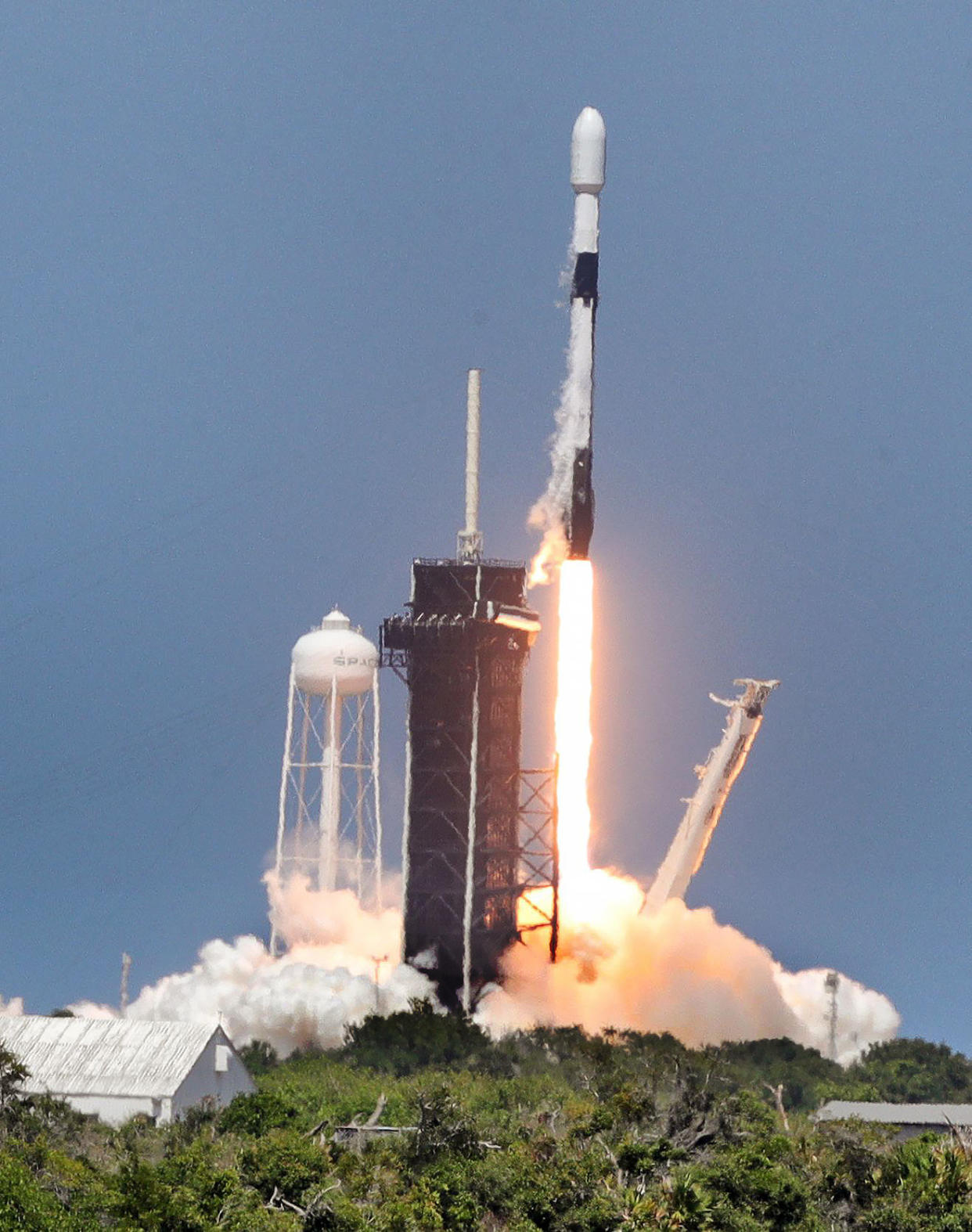SpaceX cleared to launch Falcon 9 again after submitting mishap report to FAA

SpaceX announced it had submitted its mishap investigation report to the Federal Aviation Administration after an issue that led to the grounding of its Falcon 9 rocket, and the FAA determined the company could resume launches.
“SpaceX’s investigation team, with oversight from the FAA, was able to identify the most probable cause of the mishap and associated corrective actions to ensure the success of future missions,” the company posted on its website Thursday.
The grounding came after a July 11 launch from California on a Starlink mission that saw its second stage fail to reignite as planned because of a liquid oxygen leak.
The FAA issued a statement Thursday saying it determined “no public safety issues were involved in the anomaly that occurred” during the launch.
“This public safety determination means the Falcon 9 vehicle may return to flight operations while the overall investigation remains open, provided all other license requirements are met,” the FAA stated.
SpaceX also announced its first planned return to flight for the rocket is on another Starlink mission this Saturday from Kennedy Space Center’s Space Launch Complex 39-A during a four-hour window that opens at 12:21 a.m. It has another launch from nearby Cape Canaveral Space Force Station also for Starlink slated for early Sunday.
Providing more details about the mishap, SpaceX said the leak developed within the insulation around the upper stage’s Merlin vacuum engine.
“The cause of the leak was identified as a crack in a sense line for a pressure sensor attached to the vehicle’s oxygen system,” the company posted. “This line cracked due to fatigue caused by high loading from engine vibration and looseness in the clamp that normally constrains the line.”
The leak caused “excessive cooling of engine components,” which could be seen on the live feed of the launch with a massive buildup of ice around the engine.
“As a result, the engine experienced a hard start rather than a controlled burn, which damaged the engine hardware and caused the upper stage to subsequently lose attitude control,” SpaceX said. While the Starlink satellites were able to deploy, their lower altitude resulted in them burning up in the Earth’s atmosphere.
“By design, Starlink satellites fully demise upon reentry, posing no threat to public safety. To-date, no debris has been reported after the successful deorbit of Starlink satellites,” SpaceX noted.
Still, the mission was considered a partial failure and the FAA grounded the rocket pending the conclusion of the mishap investigation.
“SpaceX engineering teams have performed a comprehensive and thorough review of all SpaceX vehicles and ground systems to ensure we are putting our best foot forward as we return to flight,” the company stated.
To remedy the issue on the rest of its fleet, SpaceX said it was removing the failed sense line and sensor on the second stage engine for near-term launches, noting the sensor is not used by the flight safety system, and its purpose can be covered with alternative sensors present on the engine.
The change has been tested at SpaceX’s rocket development facility in McGregor, Texas, with oversight by the FAA. Another qualification review, inspection and scrub of all sense lines and clamps on the entire fleet of active boosters led to more replacements in some locations, the company stated.
“Safety and reliability are at the core of SpaceX’s operations. It would not have been possible to achieve our current cadence without this focus, and thanks to the pace we’ve been able to launch, we’re able to gather unprecedented levels of flight data and are poised to rapidly return to flight, safely and with increased reliability,” SpaceX posted.
The company had been on a record launch pace for the year, having flown 47 of the 50 launches from the Space Coast as well as another 23 for California for 70 total in 2024.
The grounding had put into question several launch plans including a resupply mission to the International Space Station flying Northrop Grumman’s Cygnus cargo spacecraft and two planned human spaceflights. The private Polaris Dawn crewed mission with billionaire Jared Issacman was targeting July 31 and NASA’s Crew-9 launch to the ISS was aiming for a mid-August launch.
_____

